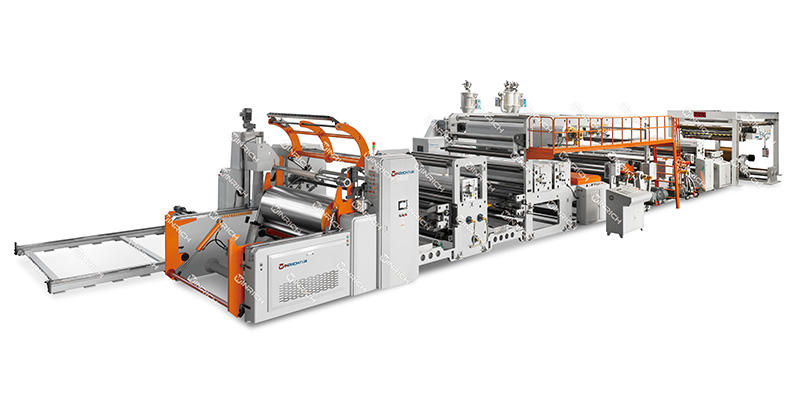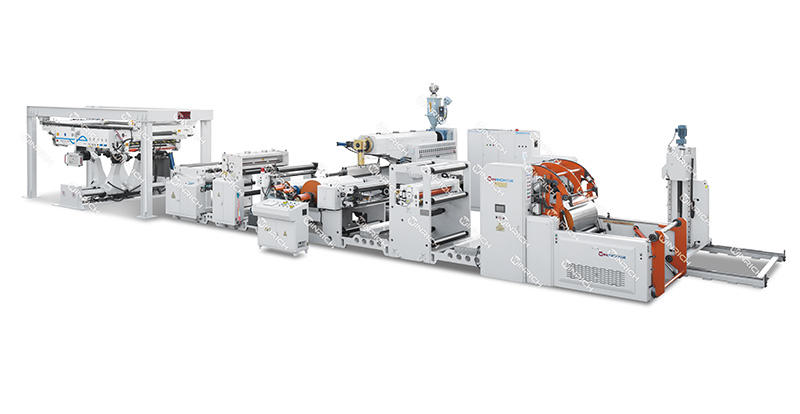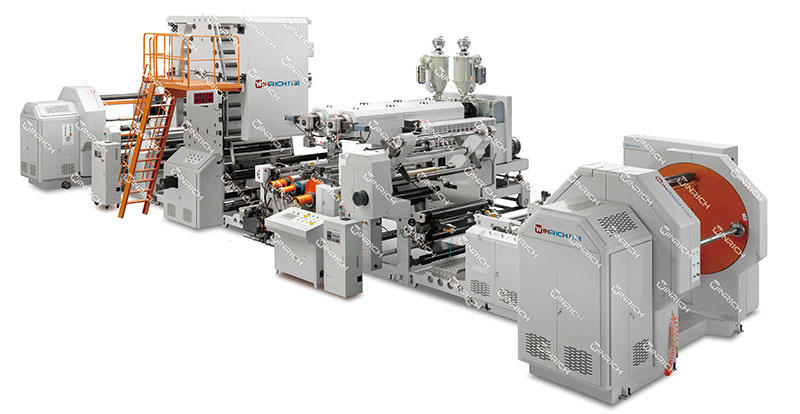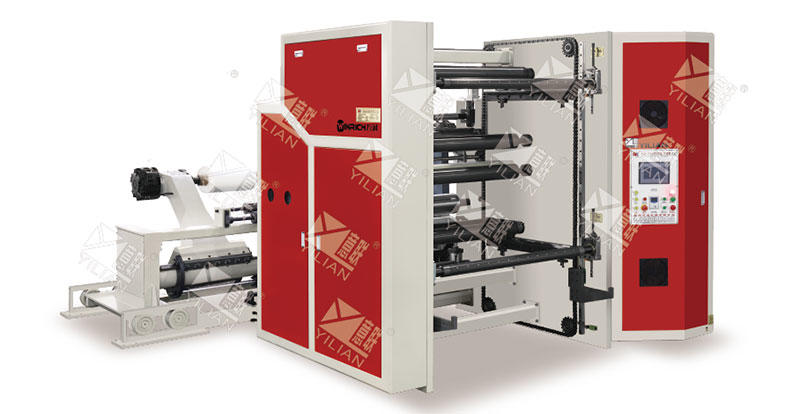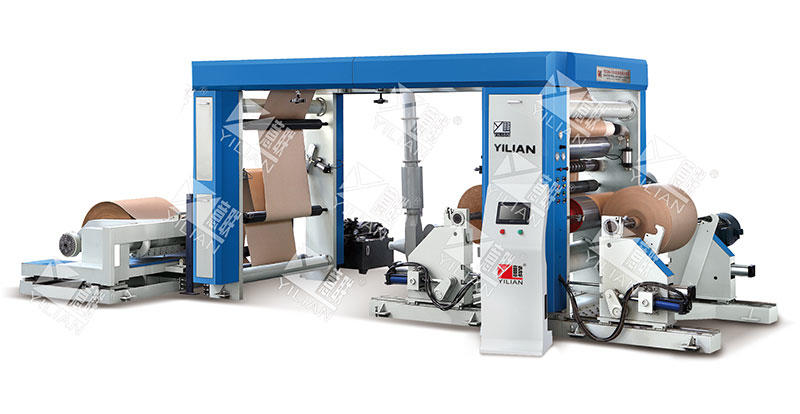A Complete Guide to Extrusion Lamination for Flexible Packaging
Introduction
Extrusion lamination is a key manufacturing process used in the flexible packaging industry to combine multiple layers of materials to create durable, high-performance packaging solutions. The process uses molten polymers as adhesives to bond substrates such as film, foil or paper together.
Extrusion laminators play a key role in producing multilayer structures that provide barrier properties, strength and flexibility, which are essential for food packaging, medical supplies and industrial applications.
I.What is Extrusion Lamination?
Extrusion lamination is a technique that extrudes a molten polymer, typically polyethylene, polypropylene or ethylene vinyl acetate (EVA), between two or more layers of substrates to create a strong, unified structure. The process enhances packaging functional properties such as:
Moisture Barrier,Gas Barrier,Heat Sealability,Durability and Tear Resistance
This method is preferred over adhesive lamination because it does not require the use of solvents, is more environmentally friendly and is cost-effective.
II.Extrusion Lamination Process: Step-by-Step
1. Substrate Unwinding
The process begins by unwinding two or more rolls of substrate (e.g. PET film, aluminum foil, or paper). These materials are fed into the Extrusion Lamination Machine under controlled tension to prevent wrinkling or misalignment.
2. Surface Treatment (Corona or Flame Treatment)
To improve adhesion, the substrate surface can be corona or flame treated to increase the surface energy for better polymer bonding.
3. Molten Polymer Extrusion
Thermoplastic resins (e.g. LDPE, LLDPE) are melted in the extruder and extruded through a flat die to form a molten film. This film acts as both an adhesive and a functional barrier layer.
4. Lamination (Lamination)
The molten polymer is pressed between the substrates using cooling rolls and pressing rolls to ensure that it forms a strong bond after cooling. Speed and pressure are precisely controlled to achieve uniform bonding.
5. Cooling and solidification
The laminate passes through a cooling roller to solidify the polymer, thus bonding the layers together.
6. Trimming and rewinding
Excess edges are trimmed and the final laminated film is rewound into a roll for further processing, such as printing or bag making.
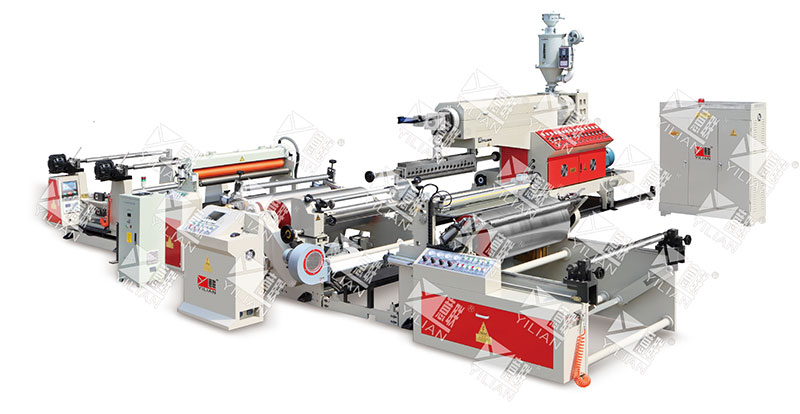
III.Key components of an extrusion laminator
A high-performance extrusion laminator consists of the following components:
Unwinding station – grips and conveys the substrate roll.
Extruder – melts and pumps the polymer.
Die assembly – spreads the molten polymer evenly.
Laminating unit – laminates the layers under pressure.
Cooling roller – rapidly cools the laminated film.
Rewinder – collects the finished product.
Modern machines use automated control to ensure precision, thereby ensuring consistency in thickness and adhesion.
IV.Advantages of extrusion lamination in flexible packaging
1.Excellent bond strength – the molten polymer forms a permanent bond with no risk of delamination.
2. Enhanced barrier properties – protects contents from moisture, oxygen and contaminants.
3. Cost-effective – no additional adhesives required.
4. Environmentally friendly – no release of solvents or volatile organic compounds (VOCs).
5. Versatility – suitable for a wide range of substrates (films, foils, paper).
V.Common Materials for Extrusion Lamination
| Substrate Layer | Polymer Binder |
| PET Film | LDPE (Low Density Polyethylene)| |
| BOPP (Biaxially Oriented Polypropylene) | LLDPE (Linear Low Density Polyethylene) |
| Aluminum Foil | EVA (Ethylene Viny | EVA (Ethylene Vinyl Acetate Copolymer) |
| Paper | PP (Polypropylene) |
VI,Applications of Extrusion Lamination Flexible Packaging
Food Packaging (Snacks, Coffee, Frozen Foods)
Medical Packaging (Sterile Bags, Infusion Bags)
Industrial Packaging (Agricultural Film, Building Barriers)
Consumer Products (Stand-up Pouches, Liquid Cartons)
Conclusion
Extrusion lamination is an efficient and versatile process that is essential for producing advanced flexible packaging solutions. By using extrusion laminators, manufacturers can produce multi-layer films with superior performance characteristics to meet the needs of a wide range of industries.
